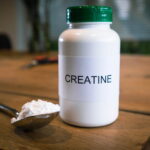Infection prevention remains an essential aspect of healthcare, especially in a world increasingly mindful of the impacts of infectious diseases. Implementing comprehensive and effective strategies within healthcare facilities can significantly reduce the risk of healthcare-associated infections (HAIs), improving patient safety and health outcomes. This article aims to guide healthcare professionals in creating a robust infection prevention plan.
Understanding The Need For Infection Prevention
The first step toward designing an effective prevention plan is understanding the pressing need for it. Commercial disinfectant cleaning services can reduce HAIs, a leading cause of patient morbidity and mortality. HAIs can lead to longer hospital stays, increased healthcare costs, and decreased patient satisfaction. By adopting a rigorous approach to infection prevention, facilities can enhance patient safety, lower costs, and improve overall healthcare delivery.
Establishing An Infection Prevention Committee
With a firm grasp on the necessity of infection prevention, the next step is establishing a dedicated committee. This committee should be multidisciplinary, with representatives from various departments, including nursing, pharmacy, environmental services, and infection control. It will develop, implement, and oversee the infection prevention plan.
Developing The Infection Prevention Plan
Now, you’re ready to craft your plan. It should be comprehensive and should cover the following key areas:
1- Hand Hygiene
Hand hygiene is a critical component of an infection prevention plan. Communicating guidelines on when and how to practice hand hygiene is essential. Ensure that hand hygiene stations equipped with soap and water or alcohol-based hand sanitizers are conveniently located throughout the facility.
By consistently practicing proper hand hygiene, including thorough handwashing and the use of hand sanitizers, you can greatly reduce the transmission of pathogens and minimize the risk of infections spreading within the healthcare facility.
2- Personal Protective Equipment (PPE)
Personal Protective Equipment (PPE) is essential in preventing the transmission of infectious agents within healthcare facilities. Your infection prevention plan should provide detailed guidelines on properly using, removing and disposing of PPE. It is crucial to train staff on proper PPE protocols to minimize the risk of contamination.
Additionally, establish protocols for monitoring and ensuring a consistent supply of PPE to ensure that healthcare workers have the necessary protection at all times. By implementing these measures, you can safeguard staff and patients from spreading infections.
3- Environmental Cleaning And Disinfection
Effective environmental cleaning and disinfection are crucial in reducing the risk of infection transmission within healthcare facilities. Regular cleaning should prioritize high-touch surfaces, such as doorknobs, handrails, and medical equipment.
Consider partnering with commercial disinfectant cleaning services to ensure thorough and efficient cleaning. These professionals should adhere to all regulatory standards and utilize EPA-registered disinfectants. By working with experts in commercial disinfectant cleaning services, you can maintain a clean and safe environment for patients, staff, and visitors.
4- Education And Training
Education and training are essential for ensuring staff members have the knowledge and skills to effectively implement the infection prevention plan. Regular training sessions should cover all aspects of the prevention plan, including proper hand hygiene, correct use of personal protective equipment, and thorough cleaning and disinfection practices.
Ongoing education on infection prevention best practices will help staff stay updated on the latest guidelines and strategies. Investing in education and training can empower your staff to effectively prevent the spread of infections and maintain a safe healthcare environment.
5- Surveillance And Reporting
Surveillance and reporting play a crucial role in determining the effectiveness of infection prevention measures and identifying areas for improvement. Your prevention plan should establish a system for routine monitoring of infection rates, including tracking trends over time. Any changes in infection rates should be promptly reported to healthcare personnel so that they can be addressed and mitigated.
By establishing a comprehensive system for surveillance and reporting, you can make data-driven decisions to improve infection prevention strategies and ensure a safe healthcare environment for patients and staff.
Implementing The Infection Prevention Plan
Having a robust plan in place isn’t enough. You need to ensure it’s properly implemented. Ensure all staff are aware of the plan and trained on their responsibilities. It’s also crucial to have a system to monitor compliance and address gaps.
Reviewing And Improving The Infection Prevention Plan
Finally, don’t forget that an effective infection prevention plan is dynamic. You should regularly review and adjust your plan to accommodate new scientific knowledge, emerging pathogens, and changing circumstances within your facility.
Conclusion
Creating a comprehensive infection prevention plan for healthcare facilities involves understanding the need for such a plan, establishing a dedicated committee, developing a detailed plan, implementing it effectively, and regularly reviewing and improving it. By doing so, healthcare facilities can significantly reduce the risk of HAIs, enhancing patient safety and improving health outcomes.
Read Also
- Why the Keto Diet Works for Some People—and Fails Dramatically for Others: An Ayurvedic Breakdown for Modern HealthcareThe keto diet has dominated weight-loss culture for years. For some people, it produces rapid fat loss, stable energy, and improved mental clarity. For others—especially those who gain weight easily—it leads to burnout, digestive distress, rebound weight gain, high cholesterol, and a metabolism that feels slower than before. Healthcare often frames this as a discipline… Read more: Why the Keto Diet Works for Some People—and Fails Dramatically for Others: An Ayurvedic Breakdown for Modern Healthcare
- How to Choose the Best Assisted Living Facility for SeniorsAre you looking for the right assisted living facility for a senior loved one? Choosing a place can feel overwhelming. There are many factors to consider, from care services to the environment. Safety, comfort, and social opportunities play important roles in daily life. Each senior has unique needs and preferences that must be met. Understanding… Read more: How to Choose the Best Assisted Living Facility for Seniors
- Burn Smart, Not Hard; Shape Burn: Clean Protein for Weight ManagementYou want to feel light, strong, and confident. You don’t want crash diets or fake promises. You need a plan that works with your body, not against it. That’s where Shape Burn comes in. You can burn fat without losing strength. You can eat better and stay full. You can manage weight in a way… Read more: Burn Smart, Not Hard; Shape Burn: Clean Protein for Weight Management
- Creatine Basics: How Much Is 5g, How Much Water You Need, and Whether Pills or Powder Work BetterIf you’ve ever walked into a supplement aisle or scrolled through fitness TikTok, you’ve probably seen people talking about creatine — usually with a shaker bottle in hand and promises of better workouts and faster gains. And honestly? They’re not wrong. Creatine is one of the most researched and effective supplements for muscle strength, recovery,… Read more: Creatine Basics: How Much Is 5g, How Much Water You Need, and Whether Pills or Powder Work Better
- Understanding Breast Cancer in Men: Key Facts and SymptomsBreast cancer is often thought of as a disease that only affects women. However, men can develop it too. Although it is less common, early detection and awareness are important. Read on to learn key facts, symptoms, and ways men can take action to protect their health. How Common Is Breast Cancer in Men? Breast… Read more: Understanding Breast Cancer in Men: Key Facts and Symptoms
- Raising Awareness: Breast Cancer Facts for Older MenBreast cancer does not affect only women, and many older men do not realize they are at risk. Because the signs can be easy to miss, many men learn about the disease only when it has progressed. Learning the basic facts now can help you stay aware and respond early. If you want to protect… Read more: Raising Awareness: Breast Cancer Facts for Older Men







